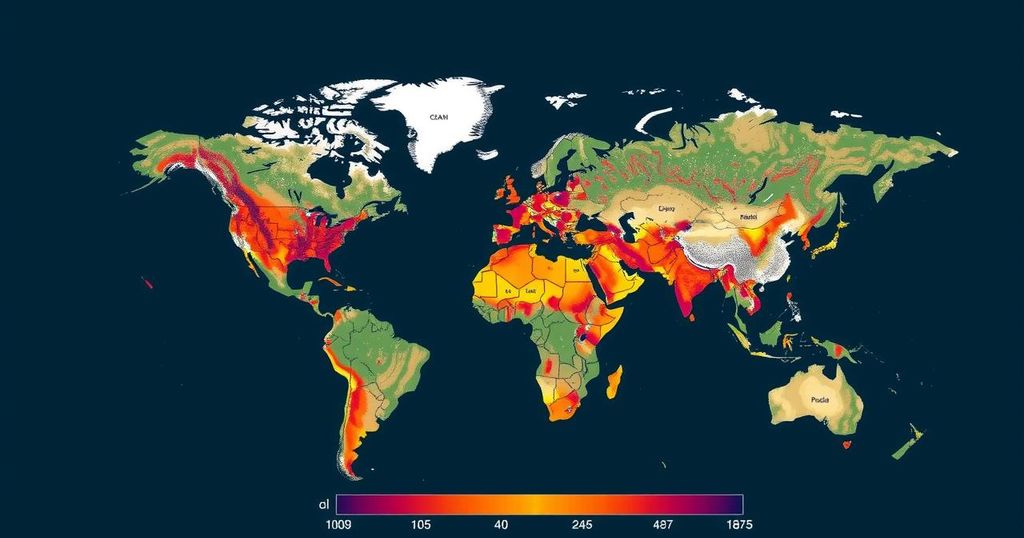The UNHCR report reveals that approximately 75% of the world’s forcibly displaced population resides in regions vulnerable to climate change. Climate change exacerbates existing vulnerabilities caused by conflict and worsens the refugee crisis, particularly evident in hotspots like the Sahel region. The voices of affected communities are vital in shaping solutions.
A recent report from the United Nations High Commissioner for Refugees (UNHCR) has shed light on the dire intersection between climate change and forced displacement. Approximately three-quarters of the world’s forcibly displaced population reside in nations that are vulnerable to climate-related hazards. During the COP29 climate conference in Azerbaijan, UNHCR’s Filippo Grandi remarked, “For the world’s most vulnerable people, climate change is a harsh reality that profoundly affects their lives.” This emphasizes the urgency of the refugee crisis exacerbated by climate change. The report highlights the plight of various refugee communities, particularly in climate change hotspots, which are simultaneously facing the threats of natural disasters and myriad insecurities. For instance, in Bangladesh, UNHCR is assisting Rohingya refugees, providing support to mitigate the impacts of severe monsoon storms, flooding, and landslides. Such assistance is crucial for vulnerable groups, who often find themselves caught in a cycle of displacement due to environmental and social strife. Grace Dorong, a climate activist and former refugee from South Sudan, poignantly illustrates the challenges in affected regions, stating, “In our region, where so many people have been displaced for so many years, we see the effects of climate change before our very eyes.” The competition for dwindling resources such as food, water, and land exacerbates tensions between refugees and host communities, culminating in potential conflict. Regions such as the Sahel in Western Africa exemplify this crisis, where rising temperatures are hastening displacement due to agricultural stress and environmental instability. Furthermore, the UNHCR indicates that the effects of climate change will be most severe in 22 identified countries, a list that includes Afghanistan, Bangladesh, Ecuador, and Honduras, which collectively account for over half of the world’s internally displaced population. Dorong urges cooperation between affected communities and decision-makers, expressing hope that the voices from these vulnerable populations will inform policies that address forced displacement: “I hope the voices of the people in this report help decision-makers to understand that if not addressed, forced displacement – and the multiplying effect of climate change – will get worse. But if they listen to us, we can be part of the solution, too.” Understanding and addressing the complex interplay between climate change and forced displacement is paramount. As the report elucidates, failure to act will amplify the already soaring refugee crisis, necessitating immediate attention from global leaders.
The ongoing climate crisis is increasingly recognized as a significant catalyst for human displacement, affecting millions worldwide. This has become particularly pressing in areas already vulnerable due to armed conflict and socio-economic instability. The UNHCR report highlights how environmental hazards and climate change exacerbate these existing vulnerabilities, resulting in increased numbers of refugees and internally displaced persons. Moreover, nations experiencing climatic changes face additional risks of societal tensions due to resource scarcity. The implications of these findings underscore the importance of global cooperation and proactive measures to mitigate these crises.
In summary, the UNHCR report underscores the pressing link between climate change and the escalating refugee crisis. With a significant portion of forcibly displaced populations in climate-vulnerable countries, immediate action is necessary to address these challenges. Recognizing the experiences and perspectives of those affected is crucial for informed decision-making, which will ultimately help mitigate the impacts of both climate change and forced displacement.
Original Source: www.outlookbusiness.com






